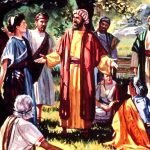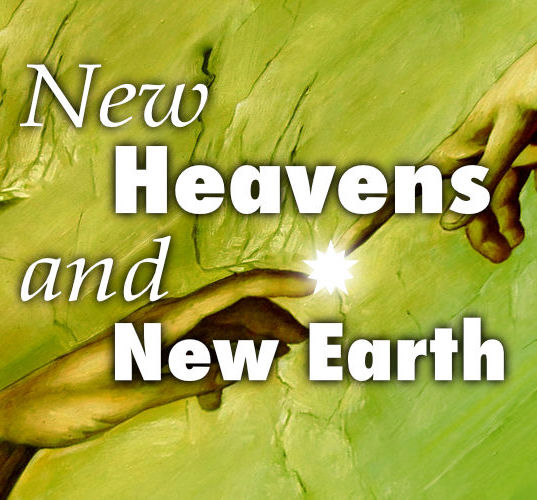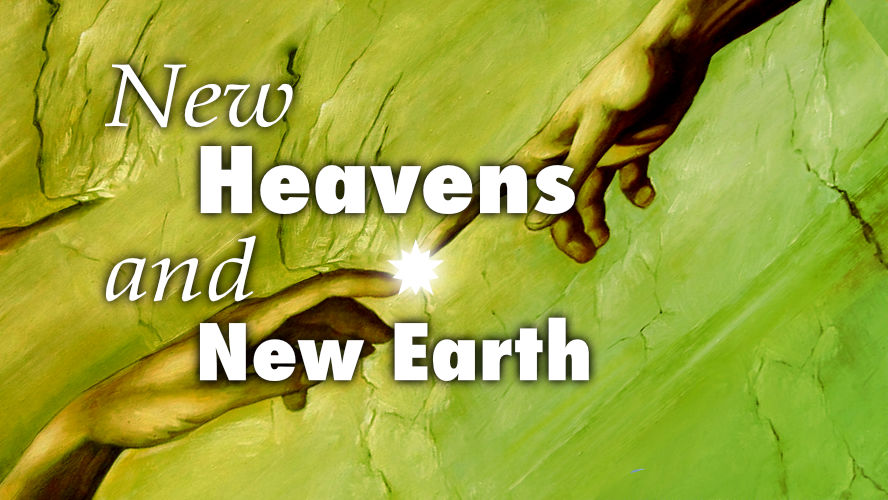
According to the modern church, God’s people are awaiting a New Heavens and Earth. Many say that this is to be a renewed planet, ‘cleansed of sin and pollution.’
However, was this what the Bible writers were speaking of? Let us consider these brief points.
Jesus understood the Heavens and Earth as the Sinai Covenant World
The Hebrew understanding of the Heavens and the Earth was unlike our western concept. According to Jesus, Israel’s obligations to the Jots and Tittles of the Torah (Law of Moses) would be binding until the Heavens and Earth passed away. See Matthew 5:18.
He also said that the prophecies in both the Torah and the Prophets must be fulfilled. At that fulfillment, the Heavens and Earth would pass away. See Matthew 5:17-18.
He also said that all things written (in the Torah and the Prophets) would be fulfilled in that generation to whom he was speaking. See Matthew 24:34-35. Thus he expected the Heavens and Earth would pass in their lifetime.
Jesus’ understanding, as well as that of the typical Hebrew, was that the ‘Heavens and Earth’ referred to the covenant relationship between God and Israel.
That old relationship was about to give way to a new covenant relationship. God would soon bring to pass all the promises made to Israel within the Sinai Covenant. This would occur in the lifetime of Jesus’ first century audience.
Peter referred to the pre-flood age as an ‘old’ Heavens and Earth
The apostle Peter laid out his understanding of ‘heavens and earth’ in his second epistle. The apostle wrote, “…the heavens were of old, and the earth standing out of the water and in the water…” (2 Peter 3:5). Notice Peter referred to the pre-flood time of Noah as “the heavens… of old… and the earth…”
In the next verse he wrote, “…the world that then was, being overflowed with water, perished…” (2 Peter 3:6). Here Peter explained that the ‘the world that then was’ – the kosmos or system that existed in Noah’s time, was what he understood to be “the heavens… of old… and the earth…”
Thus in Peter’s understanding, ‘heavens and earth’ referred to a definite time period (age, aion) in history under a definite system (kosmos). After the flood, a ‘new heavens and a new earth’ began. After the flood, God made a new covenant of the rainbow with mankind. Life had not been totally exterminated, neither had the planet been renewed. Life continued from one Kosmos age into another. There was a new time period, with a new system. Likewise in Peter’s time, the church was then looking for a ‘new heavens and a new earth,’ a new time period and system under a new covenant – the New Kosmos Age.
Would all the planets in the Solar System burn up and melt?
The inauguration of that new age would come with a fiery conflagration that would burn the elements of the old age.
Peter wrote, “the heavens shall pass away with a great noise, and the elements shall melt with fervent heat, the earth also and the works that are therein shall be burned up. …the heavens being on fire shall be dissolved…” (2 Peter 3:10,12). Notice, if we were to take Peter’s words as a scientific proclamation, then we should expect that not just the earth, but the literal heavens to be dissolved by fire. This would mean that not only our planet, but the entire milky way galaxy and its solar systems would need to be destroyed. I am not aware of anyone who believes this to be the case.
However, I believe that Peter was not speaking of the planet and its galactic environment. Instead he was speaking of the end of one system and the beginning of another.
Enjoying this post?
Support this Ministry –>
The Elements that were to be destroyed were the fundamental principles of the Old Covenant
The apostle also did not give any suggestion that this event would be thousands of years away into the future. On the contrary, he counseled his first century audience to be “expecting and hastening the coming of the day of God, by reason of which the heavens will be dissolved and the elements shall melt with fervent heat…” (2 Peter 3:12)
The word ‘elements’ is the Greek word ‘stoicheion’ which means ‘fundamental principles.’ The fundamental principles of the Sinai Covenant were written in the Torah of Moses and on the Ten Commandment tablets. These were stored in the Most Holy Place of the Jerusalem temple’s sanctuary. According to Hebrews 9:24, the sanctuary’s Most Holy Place represented Heaven itself. Thus when the Romans burnt the temple to the ground in 70AD, the ‘heavens and the earth’ – the elements of the Sinai Covenant which were its fundamental principles, were destroyed by fire. This fiery destruction was in itself a powerful symbol of the judgment of God upon that system of Death. That judgment was a visible end, so that He could inaugurate the new and better system (kosmos) in which his Life and Righteousness reigns.
The New Heavens and Earth is the new relationship between God and Man
What did Peter mean when he wrote that the early church was looking for “new heavens and a new earth, in which righteousness is dwelling”? (2 Peter 3:13)
The New Heavens and the New Earth in its simplest terms as we have seen refers to the new system or covenant relationship between God (Heaven) and Man (Earth) were Righteousness dwells. That Righteousness in the New Kosmos Age is embodied in a single person, Jesus Christ. The apostle declared, “…Christ Jesus, who of God is made unto us Wisdom, and Righteousness, and Sanctification, and Redemption!” (1 Corinthians 1:30). Hallelujah!
In the person of Christ we have been given God’s own personal Righteousness, which is superior to our own righteousness.
In the New Heaven and New Earth there are still sinners and death
Since the new heavens and the new earth is a new relationship between heaven and earth, those who are outside of this relationship, are still subject to sin and death, being ignorant of the gospel. The apostle Peter indicated that his expectation of a new heavens and earth was based on Jesus’ promise. “But according to His promise, we are awaiting new heavens and a new earth…” (2 Peter 3:13). According to Jesus’ promise the old heavens and earth would pass away in their generation. Therefore the apostles and the early church were looking for that passing away and the inauguration of the new heavens and earth.
However, even the promise of the new heavens and the new earth recorded in the Old Testament scriptures did not speak of a sinless utopia. The prophet Isaiah wrote:
“For, behold, I create new heavens and a new earth and the former things will not be remembered, nor come into mind. But be you glad and rejoice forever in what I create. For, behold, I create Jerusalem a rejoicing and her people a joy……the child will die a hundred years old and the sinner being a hundred years old will be accursed.” (Isaiah 65:17-18, 20)
In that new Kosmos, there would still exist sinners. People would still taste death – the child will die a hundred years old and the sinner being a hundred years old will be accursed.
Therefore, according to God’s own promise, the creation of the new heavens and earth was not to be without sin and death. That new Kosmos would be established on the same planet earth where sinners and death would still exist. However, God’s people would be under a new paradigm. That paradigm was inaugurated after the destruction of the elements of the old paradigm in 70AD.
The Revelation said the Sinners and the Righteous would coexist in the New Heavens and Earth
Notice how the Revelation speaks of this new paradigm.
“I saw a new heaven and a new earth, for the first heaven and the first earth had passed away…
And I saw the holy city, the new Jerusalem, coming down out of heaven from God, having been prepared as a bride having been adorned for her husband.
And I heard a great voice out of heaven, saying: ‘Behold, the tabernacle of God is with men, and He will tabernacle with them…’” (Revelation 21:1-3)
The New Jerusalem which came down to the earth is the new covenant relationship between God and man. God now tabernacles with and within his people. He dwells both in the resurrected saints in heaven and the living saints on the earth. That is the Kingdom of the heavens – the new Jerusalem – it came not by observation, but by an internal revelation.
According to the Revelation, the righteous are inside the kingdom while the wicked are outside. “…those washing their robes, …their right will be to the tree of life, and they shall enter into the city by the gates. [But] outside are the dogs, and the sorcerers, and the sexually immoral, and the murderers, and the idolaters, and everyone loving and practicing falsehood.” (Revelation 22:14-15)
The Revelation, in harmony with the Sinai Covenant prophet Isaiah, also placed both saints and sinners as coexisting on the earth. However, the saints are in the kingdom, while the sinners are outside, until such time that they are converted. This shows that on earth, the Kingdom of Heaven is a spiritual state of mind. The Kingdom of Heaven is an understanding and an identity. It is a renewal of the internal spirit of man. It is God dwelling in man.

Find Out More in this Amazing Book!
Why Christ Has Already Come Back…
And Why The Church Would Never Believe It
Discover the Truth concerning the Coming of the Son of Man in the Clouds of Heaven!
READ MORE
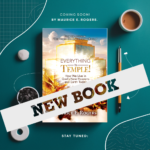
Everything is Temple! My New Book

What was the Place that Jesus went to Prepare?
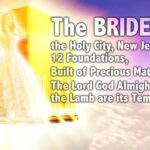
The New Jerusalem has already descended
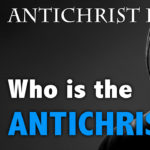
Who is the Antichrist?

The Millennium – what Jesus and the Apostles really taught

The 2nd Coming opened the Way for us to become Sons of God
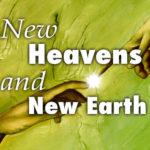
What is the New Heavens and Earth?

The Reign of Death has already Ended!
